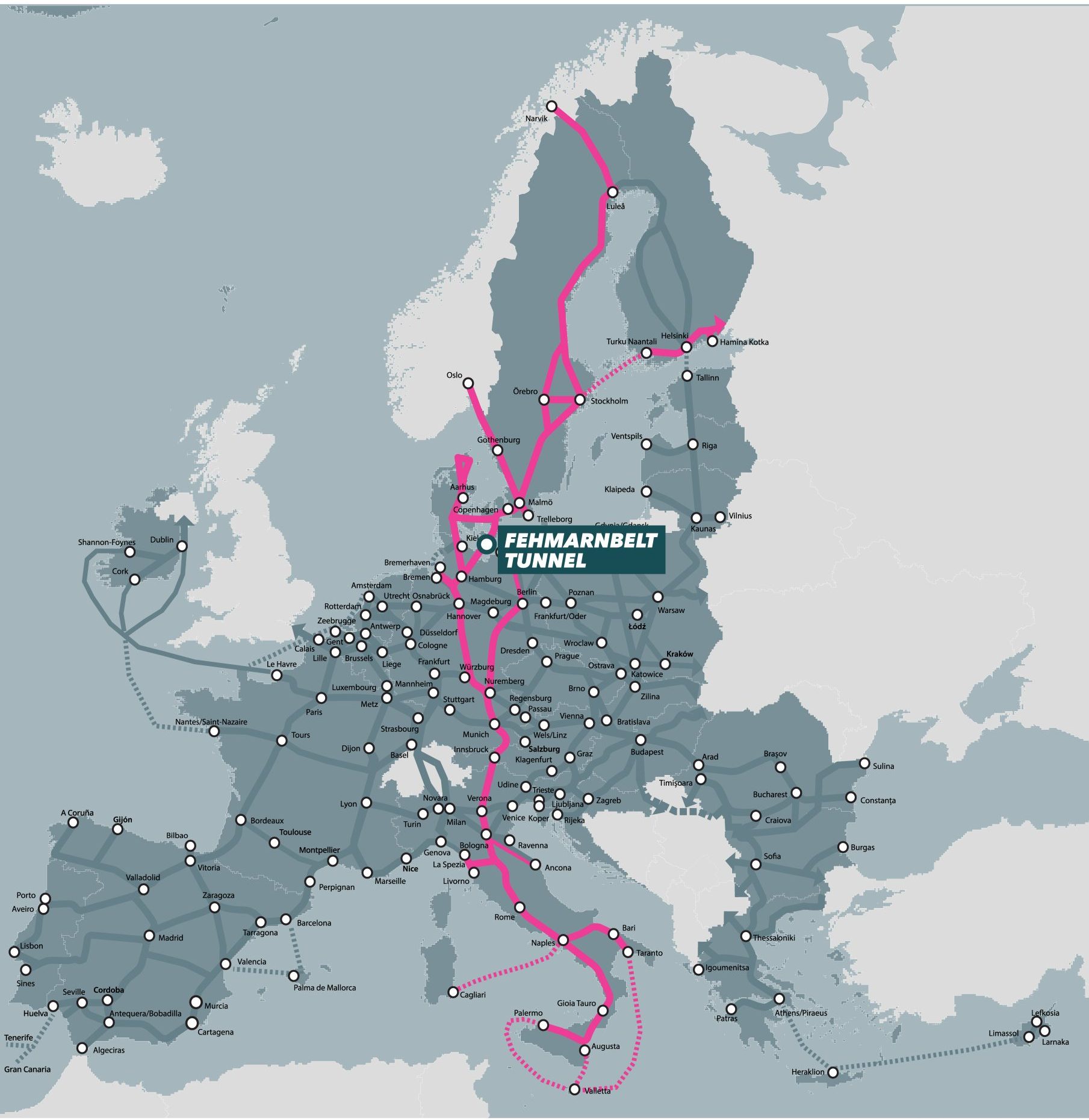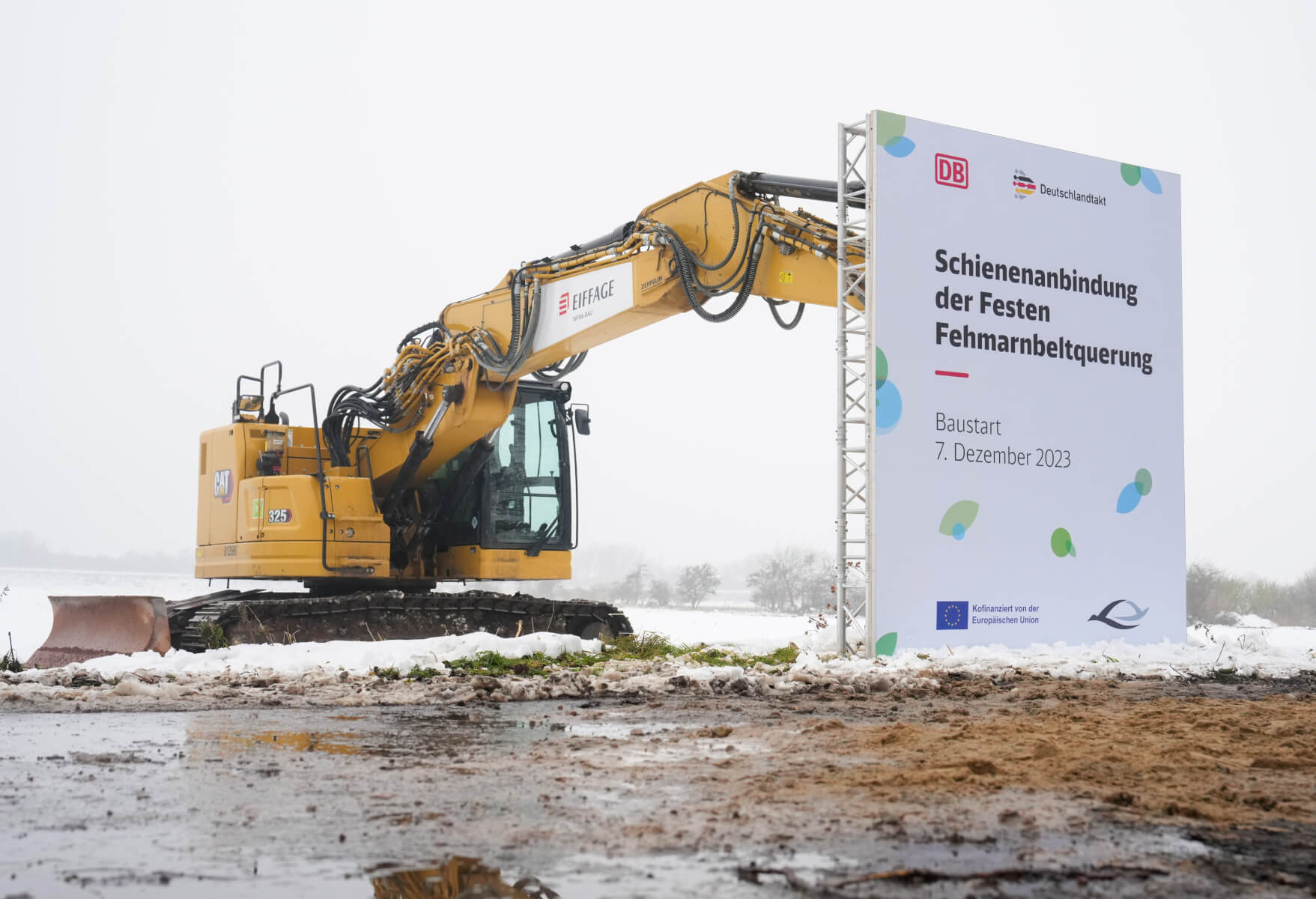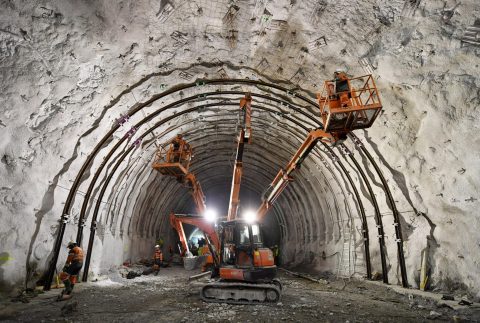It’s happening: DB starts construction for Fehmarn Belt Tunnel access

Construction for the future German rail access to the Fehmarn Belt Tunnel, leading into Denmark, is officially underway. The new 18.2-kilometre underwater tunnel will connect the Danish island of Lolland with the German island of Fehmarn. This will significantly improve rail freight connections along the Scandinavian-Mediterranean TEN-T Corridor, connecting Oslo in Norway to Palermo in Italy.
Once the infrastructure is ready in 2029, Deutsche Bahn (DB) said, 68 freight trains will run through it daily, with an additional 30 freight trains from the port of Travemünde towards Italy. The Fehmarn Belt Tunnel will create a new route thanks to which freight trains will avoid a 160-kilometre detour through Denmark, as explained by the STRING Megaregion, a political member organisation for local and regional authorities in Northern Europe.
However, STRING is pointing out that more investments are needed along the rest of the Scan-Med Corridor rail infrastructure. Otherwise, they claimed, “road freight transport could increase by up to 120%, while rail freight transport could decrease further”. For example, Danish bottlenecks around Copenhagen and links to Sweden via the Öresund Fixed Link should still be improved to ensure competitive rail freight services.

Two construction phases
Thursday, DB started the upgrade of the railway running for 11.4 kilometres along Fehmarn Island, from the Fehmarnsund Bridge to Puttgarden, which will become double-track. The company underlined that the connection from the island to the German mainland in Lübeck will start in 2026 and will entail the construction of 55 kilometres of new railway. The project is being carried out by Danish company Femern. The European Union, the German Federal government, DB, and the Schleswig-Holstein State are investing in the project for a total of 3.5 billion euros. With 18.2 kilometres, the Fehmarnbelt tunnel will be the world’s longest immersed tunnel for both vehicles and trains.

Also read:




